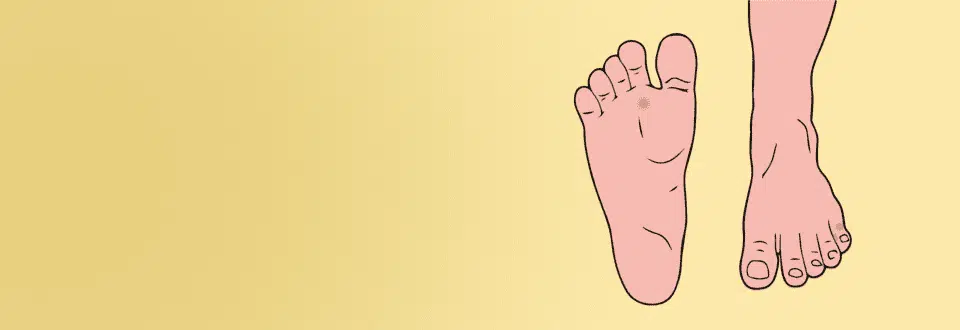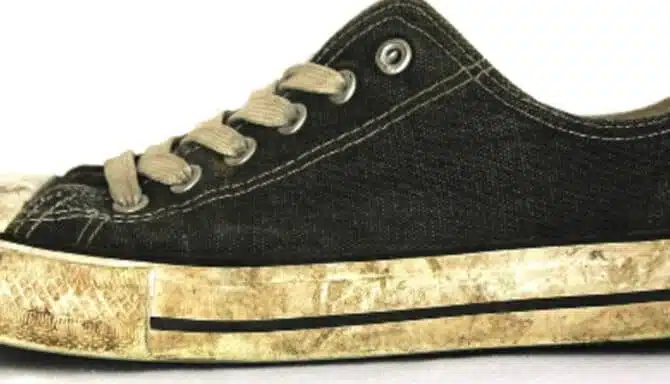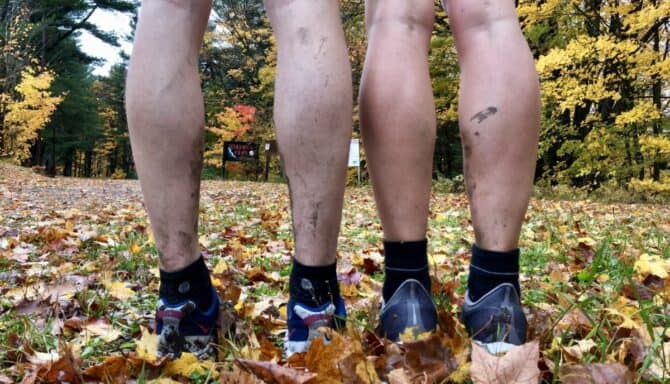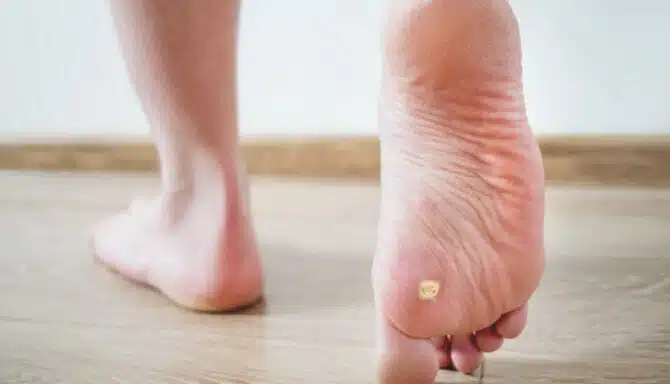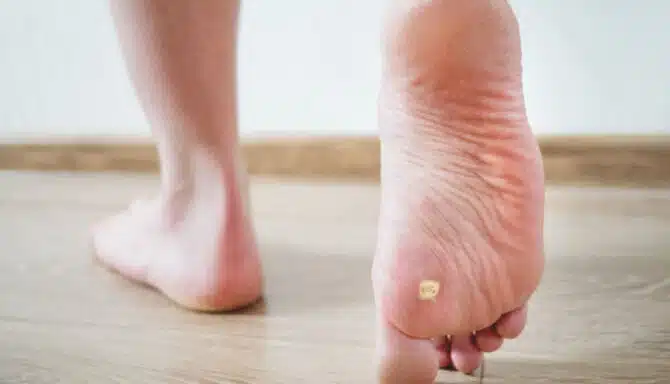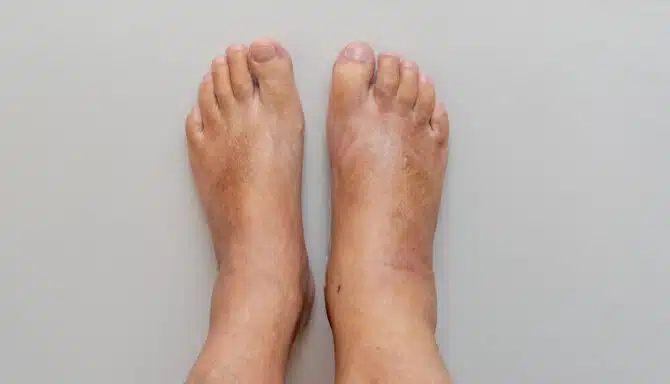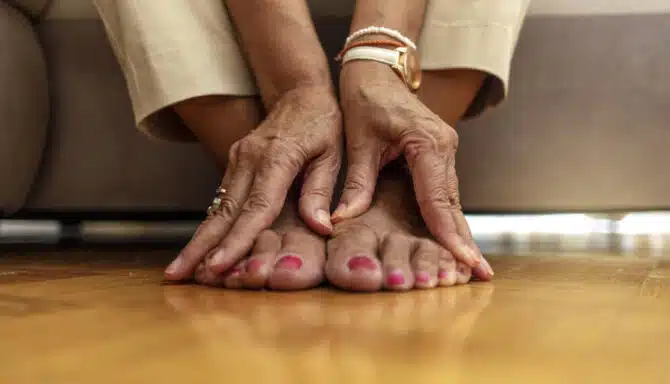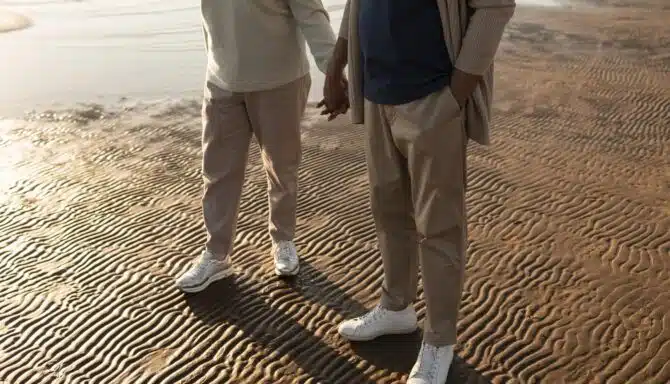Callus or Corn?
Hyperkeratosis is a thickening of the skin and can form on areas, usually over boney areas that are prone to repetitive pressure or friction. Callus, however, is a type of hyperkeratotic lesion that occurs over a larger area and is generally not painful. Callus is generally uniform in thickness and common areas include around the nail, the ball of the foot and the back of the heel.
Corn is the common term for heloma durum, a well demarcated hyperkeratotic lesion that occurs in a localized spot with a central core that pushes deeper into the skin and can cause pain and inflammation.
The term corn is derived from the name of the epidermal outer layer, the stratum corneum. The stratum corneum can be thickened with constant abnormal pressure causing either helomas (“corns”) or callus.
Corns, or helomas, as referred to by chiropodists and podiatrists, are well demarcated lesions with a central keratin core, which can appear more yellow or translucent in appearance. They usually have surrounding callus.
Hard vs Soft Corns
Hard corns or heloma durum are, as the name implies, hard hyperkeratotic lesions that are well circumscribed and have a central core. They are usually found on the tops of toes or on the ball of the foot.
Soft corns are found between toes and with excess moisture, become a macerated lesion that can be painful. They are most commonly between the 4th and 5th toes. They are caused when the toes are moving against each other, either through toe deformity or an ill-fitting shoe, or both.
Both types are not serious health concerns and can be conservatively managed through sharp reduction from your foot specialist as well as proper padding or insoles and properly fitted footwear. Other factors including smoking and moisture control can also be considered.
Will it go Away?
Corns, also known as Heloma durum, “go away” with physical treatment. A foot specialist can remove corns via sharp blade. However, true removal and prevention involves diagnosing the cause of corn development.
Why do I have it?
The main cause of heloma durum, otherwise known as corns, is abnormal mechanical stresses, which can be intrinsic or extrinsic. Intrinsic risks include boney prominences, poor healing of old injuries, or faulty biomechanics including rigid joints and hammertoes. Extrinsic causes include ill fitting footwear, improper footwear to the foot type (e.g. high heels), or high level of activity (e.g. stair climbing, martial arts.)
What are the Risks?
Risks include systemic disease like diabetes, rheumatoid arthritis, stroke, or neurovascular disorders like cerebral palsy or Charcot-marie-tooth disease. Family history of foot deformity like hammertoes or bunions can predispose a person to callus and corns. Smoking can also increase formation of corns as vascularity to the feet is decreased.
Corns can be dangerous if left untreated. Specifically, heloma durum pushes against the dermis layer of skin and can create an ulcer if left untreated. This is especially risky for persons with immune disorders or diabetes.
While corns are not cancerous, there may be some lesions that look like corns that can be or become malignant, and is best to contact your physician or book an appointment with us for an assessment.
Corns generally do not spread. If you find corns are increasing in number it’s best to come in for an assessment, as they may be a different lesion that can mimic corns, like warts.
A question to ask is how long have you noticed the lesion? —Corns are usually long standing and gradually developing. Warts are usually new and generally on one foot.
Corns can have different types. The common corn type, heloma durum, is treated with sharp reduction. A blade is used to remove the core keratin plug. Since this plug has no blood vessels or nerve endings, reduction should be little to no pain.
For more aggressive or painful corns, like neurovascular heloma, they may be treated with topical treatments or with topical anesthetic before sharp reduction.
Can I Treat it at Home?
Due to the localized nature of corns, it is not recommended to self remove heloma durum. Foot specialists are highly trained to safely and evenly reduce callus and corns.
There are low acid concentrated solutions that are over the counter that can soften the keratin plug of corns. The topical is applied to the central core of the corn and when the core is soft enough, it can be easily removed.
Proper diagnosis of any foot lesions is vital to treatment. Physicians or specialists will be better trained to evaluate any foot lesions. Foot specialists can also provide treatment.
Shoes with deeper and wider toe boxes and soft insoles may reduce pressures that can develop corns. Look for shoes with laces as they can prevent excess movement of the foot inside the shoe.
Dry skin may reduce elasticity to the skin which can increase corn and callus formation.
Any foot condition that cause abnormal mechanical stresses or foot deformity may increase risk of developing corns. For example, hammertoe deformity may increase pressures at the ball of the foot and at the tip of the toe, which can lead to callus or corn formation. Excess perspiration can cause corns that are between the toes to absorb more moisture leading to painful soft corns (heloma molle).
What Happens After?
Following corn removal, there may be a small depression where the keratin plug once was. Treating the cause is most important to completely prevent reformation of corns. The area will look flat without pain for many months.
Corns may return if mechanical stresses exist, and thus can return dependent on intrinsic and extrinsic factors.
Treating the cause is the best way to prevent formation of corns. A foot assessment is the recommended route to determine the cause of corns. For example, if corns are caused by external pressures, the pressure source should be identified and removed. If the cause is more intrinsic, e.g. foot deformity, then offloading devices can be made to prevent corn formation.
